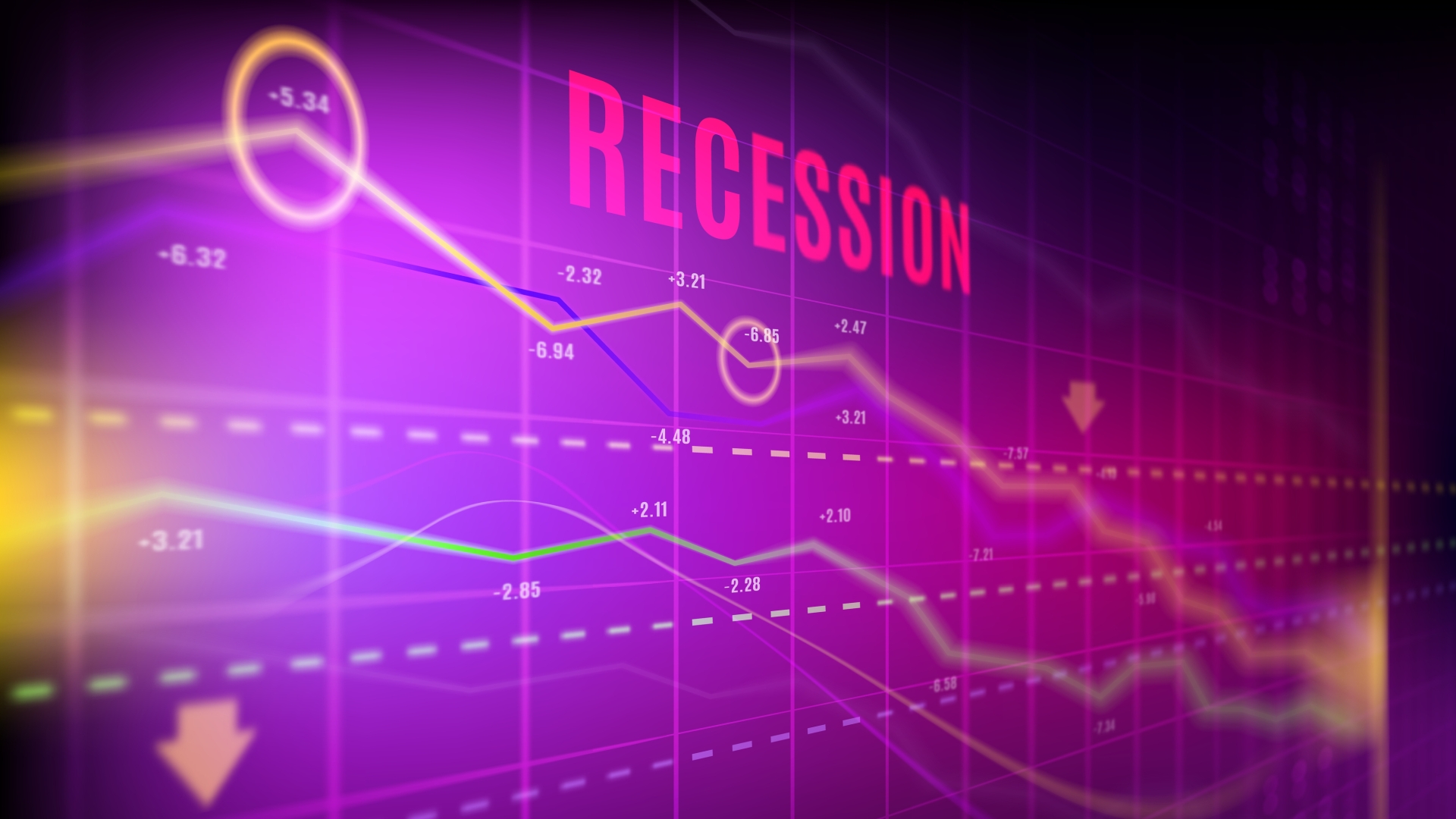
Finance expert George Kamel of Ramsey Solutions recently broke down six warning signs of a recession. “The question is not if another one’s coming — it is when,” he said in the YouTube video. “Recessions are a normal part of the economy.” However, he added that he can’t tell right now whether 2025 will bring a full-blown recession or not.
Be Aware: Trump Isn’t Ruling Out a Recession This Year — What Could That Mean for Your Wallet?
Find Out: 7 Things You'll Be Happy You Downsized in Retirement
GOBankingRates asked finance experts how they feel about the recession markers and Kamel’s take on them. Let’s explore the warning signs that could indicate a recession on the horizon and what they mean in the current economic climate.
GDP Falls for Two Straight Quarters
Kamel explained that the definition of a recession is when GDP falls for two quarters in a row and the National Bureau of Economic Research declares a recession. The GDP contracted by 0.5% in the first quarter, which was the first decline since early 2022, according to Trading Economics. However, it is predicted to rise by 2.9% in the second quarter, according to the Federal Reserve Bank of Atlanta’s GDPNow forecast.
Of all the indicators, the GDP seems to be the least concerning to experts. “Back-to-back quarters of decline would be more definitive,” said William London, partner at Kimura London & White.
Lucia Lu, senior consultant at business solutions provider Nextpins, agreed. “A little GDP decline does not guarantee that we will enter a recession. It might just be a momentary drop followed by a rebound.”
Read Next: 4 Surprising Things That Could Impact Your Wallet If a Recession Hits
Rising Unemployment
Kamel pointed to rising unemployment as a potential indicator of recession. And other experts agree.
“Rising unemployment is a classic warning sign,” London pointed out.
“Generally indicating declining economic conditions, unemployment is still increasing,” Lu said. However, she called it a “sluggish climb with no significant spike in layoffs, indicating that we could circumvent a sharp recession.”
A Drop in Consumer Spending
Kamel pointed to a drop in consumer spending as the next sign. “When people stop spending money, businesses stop growing,” Kamel said.
As reported by Reuters, consumer spending did drop slightly in May, but that was only the second drop in 2025.
Meanwhile, credit card debt in the U.S. stands at $1.18 trillion, according to New York Federal Reserve data, and buy now, pay later programs are growing in popularity.
“This is the illusion of strength that’s being sustained by consumer debt. It’s consumption masquerading as strength. Once credit lines and all these other factors collapse, you’ll see spending fall rapidly,” said Sergio Altomare, CEO and co-founder of Hearthfire Holdings.
Tighter Lending Standards
The next sign, according to Kamel, is tightening credit and lending.
As consumers exhaust their ability to borrow money, banks tighten their credit standards to protect themselves. Interest rates have remained high, which is already causing a contraction in the real estate market and could spread to other spending. “We’re approaching a credit exhaustion point where neither the government nor the average household has any meaningful capacity to continue borrowing. So we’re not avoiding a recession,” Altomare said.
“When banks pull back, companies and individuals are less able to invest or weather financial stress — something I’ve seen impact clients’ ability to finance estate arrangements or execute real property strategies,” London said, calling this credit tightening “especially concerning.”
However, Lu said, “The tightening is not great enough to imply an imminent collapse.”
An Inverted Yield Curve and Market Volatility
Finally, Kamel pointed to an inverted yield curve and stock market volatility as warning signs. The yield curve is not inverted right now, which is a good sign, per Kamel.
However, the market volatility of recent months could point to a recession in late 2025, according to Kamel and other experts. “Wild swings … usually mean investors are nervous about the future, and when confidence drops, people pull back, which can turn fear into reality,” Kamel said in the video.
“Persistent volatility combined with other pressures can continue to erode investor and consumer confidence,” London agreed.
Is the US Heading for Recession?
For the most part, experts agreed with Kamel’s take that it’s too soon to tell whether 2025 will bring a recession or not. “My overall thesis is that we are heading into a recession, but it is being delayed and happening at a much slower pace than ever before,” Altomare said.
“It’s too soon to say exactly whether we will enter a recession in Q3 or by year-end, [but] stagnation is possible,” Lu said, taking a stance of “cautious optimism.”
London was also optimistic for the short term. “I don’t believe we are necessarily going into recession in Q3, but if the job losses continue to mount and credit remains tight, we are likely to see the U.S. drift into a mild recession later in 2025. With that said, consumer spending resilience and strength in a portion of the market may leave us just barely in the positive,” he said.
More From GOBankingRates
- 7 McDonald's Toys Worth Way More Today
- 4 Companies as Much as Tripling Prices Due To Tariffs
- 7 Luxury SUVs That Will Become Affordable in 2025
- 3 Reasons Retired Boomers Shouldn't Give Their Kids a Living Inheritance (And 2 Reasons They Should)
This article originally appeared on GOBankingRates.com: 6 Warning Signs of a Recession — and Where the US Economy Stands, According to George Kamel







